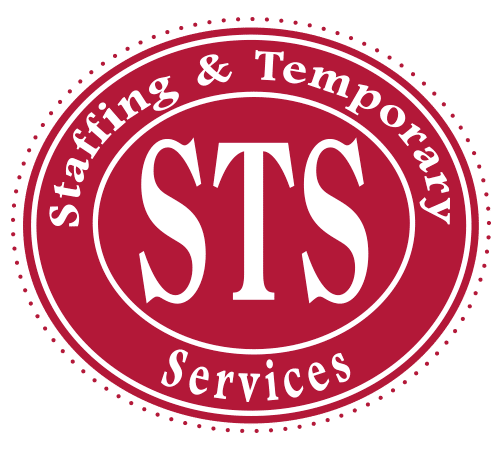Mastering Effective 1-1 Meetings: Tips for Managers
Mastering the art of 1-1 meetings is crucial for building strong professional relationships, fostering open communication, and driving individual and team growth.
1-1 meetings provide a dedicated space for meaningful conversation, reflection, and goal-setting. However, without a thoughtful approach, these meetings can easily become unproductive or even a source of frustration for managers and their direct reports.
We aim to equip you with practical tips and insights to make your 1-1 meetings more engaging, collaborative, and valuable. We’ll explore various aspects that contribute to the success of these meetings, including establishing a clear agenda, setting goals and expectations, active listening, providing constructive feedback, and fostering a supportive and inclusive environment.
By implementing the strategies shared here, you’ll be able to transform your 1-1 meetings into powerful and effective tools for professional development, performance improvement, and overall organizational success.
Establishing a Clear Agenda: Structuring Productive Conversations
A crucial component of effective 1-1 meetings is establishing a clear agenda. Without a well-defined plan, these meetings can easily veer off-topic or become unstructured, leading to wasted time and limited outcomes. By setting a clear agenda, both the manager and employee can come prepared with specific topics to discuss, ensuring that the meeting stays focused and productive.
To create an effective agenda, start by identifying the goals and objectives for the 1-1 meeting. Consider the specific needs and priorities of the employee, as well as any larger organizational goals that need to be addressed. By aligning the agenda with these objectives, you can ensure that the meeting is meaningful and contributes to the growth and development of the employee and the team as a whole.
For example, if the employee is working on a particular project, the agenda could include discussing progress updates, addressing any challenges or roadblocks encountered, and brainstorming potential solutions. Alternatively, if the employee is seeking career guidance, the agenda could focus on discussing long-term goals, identifying areas for improvement, and strategizing ways to enhance professional growth.
During the meeting, it’s important to stick to the agenda while allowing for flexibility and open dialogue. This ensures that all relevant topics are covered while also creating space for any unexpected issues or concerns that may arise. By following a structured agenda, managers can keep the meeting on track and maximize the value of their time with employees.
Setting Goals and Expectations: Promoting Growth and Accountability
In addition to establishing a clear agenda, another key strategy for mastering effective 1-1 meetings is setting goals and expectations. Clear goals give both the manager and employee a sense of purpose and direction while also providing a framework for assessing progress and measuring success.
During the 1-1 meeting, take the time to discuss specific, measurable, achievable, relevant, and time-bound (SMART) goals with the employee. Encourage them to articulate their own goals and aspirations and provide guidance and support in aligning these goals with the larger objectives of the team or organization.
For example, if a financial analyst is looking to improve their skills in data analysis, the manager can help them set a SMART goal, such as “Increase proficiency in data analysis by completing an advanced statistics course within the next six months.” This goal is specific, measurable (completion of the course), achievable (within six months), relevant (to the employee’s role as a financial analyst), and time-bound.
Setting expectations is equally important in driving accountability and fostering growth. Clearly communicate the performance standards and behavioral expectations for the employee, and provide regular feedback to ensure alignment and progress toward these expectations. By discussing and revisiting goals and expectations during 1-1 meetings, managers can provide the necessary support and guidance, ensuring that employees stay motivated and empowered to achieve success.
Active Listening: Cultivating Trust and Collaboration
A fundamental aspect of any effective 1-1 meeting is practicing active listening. When managers actively listen to their employees, they create an environment of trust, respect, and open communication. Active listening involves giving full attention to the speaker, seeking to understand their perspective, and responding in a thoughtful and meaningful way.
To practice active listening, managers can employ techniques such as maintaining eye contact, nodding to show understanding and asking clarifying questions. It is important to create a safe space where employees feel comfortable sharing their thoughts, concerns, and ideas. By actively listening, managers can gain valuable insights into the employee’s experiences, perspectives, and aspirations, allowing for better-informed decision-making and support.
Active listening not only strengthens the manager-employee relationship but also encourages collaboration and innovation. By genuinely valuing and incorporating employee feedback and ideas, managers can create a culture of inclusivity and continuous improvement, leading to higher levels of engagement and productivity.
Providing Constructive Feedback: Encouraging Growth and Learning
Constructive feedback is a vital component of effective 1-1 meetings. Providing feedback that is honest, specific, and actionable helps employees understand their strengths and areas for improvement and empowers them to make meaningful changes to their performance.
When providing constructive feedback, it is important to focus on the behavior or outcome rather than making it personal. Emphasize the impact of the behavior or performance on the individual, the team, or the organization, and provide concrete examples to support your observations.
For example, instead of saying, “Your writing skills need improvement,” a more constructive approach would be, “I noticed that in the last report you submitted, there were several grammatical errors that affected the clarity of the message. To enhance the quality of your writing, you may consider taking a writing course or utilizing tools such as grammar checkers.”
Additionally, it is crucial to balance constructive feedback with positive reinforcement. Recognize and appreciate the employee’s achievements and contributions, and highlight the progress they have made since previous feedback sessions. This helps create a supportive and motivating environment where employees feel valued and encouraged to continue their growth and development.
Fostering a Supportive and Inclusive Environment: Promoting Psychological Safety
Psychological safety is crucial for employees to feel comfortable expressing their thoughts, ideas, and concerns without fear of judgment or reprisal.
To create a psychologically safe environment, managers can lead by example. Demonstrate empathy, compassion, and respect in your interactions with employees, and encourage open and honest communication. Value diverse perspectives and actively seek input from employees with different backgrounds, experiences, and expertise.
During 1-1 meetings, take the time to ask open-ended questions and actively solicit feedback from the employee. Encourage them to share their thoughts and ideas and provide space for them to contribute to decision-making processes or problem-solving discussions. By valuing and incorporating their input, you empower employees to take ownership of their work and contribute to the overall success of the team and organization.
Additionally, managers can create opportunities for employees to connect and collaborate with one another. This can include fostering cross-functional projects, organizing team-building activities, or facilitating knowledge-sharing sessions. By creating a sense of belonging and inclusivity, managers can tap into the diverse talents and perspectives of the team, leading to increased innovation and productivity.
So, whether you’re a manager seeking to enhance your leadership skills or an employee looking to actively contribute and grow within your role, it’s time to embrace and master the art of 1-1 meetings. Start implementing these strategies today and watch your professional relationships and performance soar.
About STS Staffing & Temporary Services, Inc.
At STS Staffing, we specialize in matching talent with opportunities across a myriad of industries. With strategically located offices in Reno/Sparks, NV; Las Vegas, NV; Phoenix, AZ; Minneapolis, MN; and Nashville, TN, we pride ourselves on building long-term, trust-based relationships with both employers and job seekers. For over 30 years, we’ve specialized in sectors like seasonal/retail, manufacturing, warehouse, customer service, healthcare, administration, and transportation. Recognized for our meticulous screening processes, we’re committed to precision matching, ensuring a seamless fit for both parties. Our service excellence is marked by a quick turnaround, a nationwide operational footprint, and an unwavering satisfaction guarantee, all underpinned by our deep industry insights and tailored approach to staffing.
So, if you’re looking for top talent, trust in STS Staffing to deliver exceptional results. Contact us today to discover how we can help you achieve your goals.

